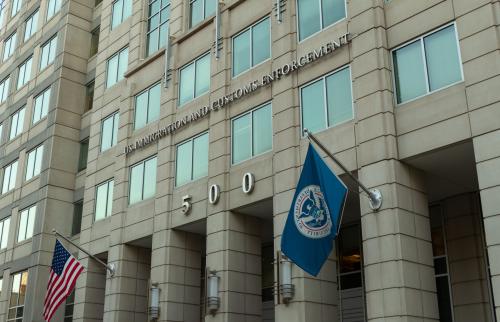Employers added 142,000 to their payrolls in August, well off the pace of job gains in the previous six months. From February through July payrolls climbed an average of 240,000 a month. Despite the falloff in job growth in August, the gains were comfortably above the pace needed to bring the job market closer to full employment. Net employment gains of 70,000 to 90,000 a month are needed to keep up with the growth in the working-age population. As long as job gains exceed this rate, the nation will make progress toward reducing the overhang of excess unemployment.
August was the 54th consecutive month in which private firms added to their payrolls. Notwithstanding the slowdown in overall job growth, employment gains continued to be strong in business services (+47,000) and health and education services (+37,000). Temporary help services added 13,000 to payrolls, which may signal future employer demand for extra workers.
One of the most encouraging numbers in the August jobs report was the rise in construction employment. Construction companies added 20,000 to their payrolls, slightly above the average rate of job gain in the previous 12 months. On a seasonally adjusted basis, construction firms have added to their payrolls every month this year. The sustained improvement in construction employment represents a major turnaround from earlier months in the recovery. Not only was construction one of the worst hit sectors in the Great Recession, but its recovery has been painfully erratic and slow.
Other industrial sectors saw weak or negligible employment gains in August. Manufacturing employment flat-lined after 12 successive months of gain. Employment in the retail sector fell 8,000 last month after increasing an average of 24,000 a month in the previous 12 months. To be sure, monthly job gains in retailing are highly variable, and have ranged from a loss of 22,000 to a gain of 43,000 during the past 12 months. Government payrolls expanded weakly in August (+8,000), but at least the public sector has been adding to rather than subtracting from U.S. employment totals. During most of the recovery, public payrolls shrank, creating headwinds for the expansion.
The household survey showed little change in the labor force status of American adults. The reported number of people employed was virtually unchanged, while the number actively looking for a job fell 64,000. As a result, the unemployment rate edged down to 6.1%, matching the post-recession low unemployment rate recorded in June.
The number of Americans reporting an unemployment spell lasting longer than 6 months shrank by 192,000 in August, bringing the number down to 2.96 million. This is smallest number of long-term unemployed we have seen since January 2009. While it is good news that fewer adults report they are in a long unemployment spell, it would be even better news if we were certain their exit from unemployment was the result of entry into a job. In many cases, however, it was probably linked to an exit from the workforce. Adults who have been unsuccessful in looking for work frequently give up searching. In August the labor force participation edged down 0.1 point to 62.8%, matching the lowest participation rate of the past 37 years. The nation still has a way to go before eliminating the labor market slack created by the Great Recession.
The Brookings Institution is committed to quality, independence, and impact.
We are supported by a diverse array of funders. In line with our values and policies, each Brookings publication represents the sole views of its author(s).



Commentary
Job Market Continues to Grind out Gains, but at a Slower Pace
September 5, 2014